Yesterday, Green Eatz joined a tour of Ouroboros Farms, organized by Sustainable San Mateo County. This aquaponic farm is located just off the Pacific Coast in Half Moon Bay, California and has a commitment to sustainably-grown foods and giving back to the community.
Ouroboros Farms has a 30,000 gallon facility set in a greenhouse of 7,000 square feet and supplies greens to local restaurants such as Half Moon Bay Brewery and The Perennial in San Francisco. You can also find their produce at the online marketplace GoodEggs. Ken Armstrong, the Big Fish, was our tour guide and gave us a lively insight into the world of aquaponics.
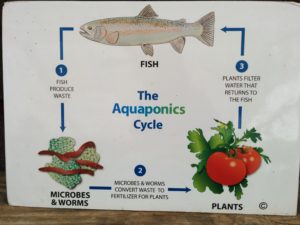 What is Aquaponics?
What is Aquaponics?
Aquaponics is the combination of raising fish (aquaculture) with the growing of plants in water (hydroponics). Simply, the waste products from the fish provide nutrients to the plants in a circulating water system. In practice, it is rather more complicated than that!
At Ouroboros Farms, the full process takes 10 steps and requires a fine balance of water quality, fish quantity, fish-food, microbes and nutrients to provide the best growing conditions:
- Fish such as Koi and Catfish are raised in four 12,000 gallon plastic water tanks. Bacterial microbes process their waste to produce nitrate-rich water.
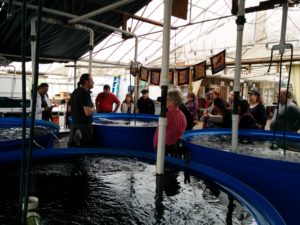
Fish tanks
- The water and fish waste (poo!) is piped into the filtration tanks.
- The swirl filtration tank removes solid waste by using the centrifugal force of swirling water. This waste feeds into worm beds to produce vermi-compost.
- The brush filtration tank removes larger waste particles.
- The degassing filtration tanks remove unwanted gases such as hydrogen sulphide. Here, extra nutrients such as potassium, calcium and iron are added to the water.
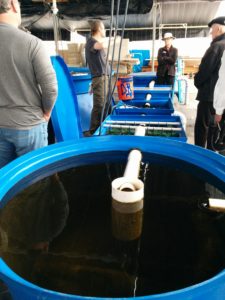
Filtration tanks
- The nutrient-rich water is piped into the media-beds.
- The media beds contain clay pebbles mixed with worms and provide a final nutrient boost and cleanse of the water. Here, the conditions are perfect to grow enormous tomato vines.
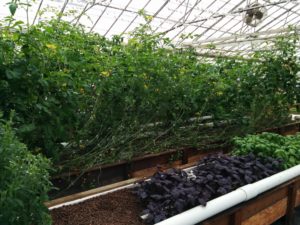
Media beds
- The water is pumped into the raft beds. Here, plants float on the water surface in polystyrene rafts with their roots reaching down into the water.
- Each raft bed is 4ft wide and 120ft long. Seedlings are planted at the far end and moved along the beds as they grow. In 5 weeks, they reach the near end and are ready for harvesting.
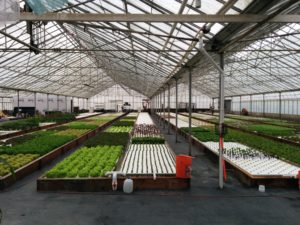
Raft beds
- The water is returned to the fish tanks and the cycle continues…
What are the benefits of Aquaponics?
- it uses far less water than conventional soil farming, less than a gallon per lettuce compared to 7-30 gallons
- plants grow 30-50% faster than conventional farming
- low power as it mainly uses sunlight and gravity for its needs
- much denser planting from 2 times more (lettuce) to 10 times more (kale)
- fish farms dump toxic waste in the water supply, there is no waste with aquaponics
- plants taste better and stay fresh longer
- combines production of protein source (fish) with plant produce
- can be located close to or in urban centers
- can use artificial LED lights instead of sunlight
What are the drawbacks of Aquaponics?
- it is best-suited to growing leafy greens and cannot be used for grain crops
- fish are kept in inhumane conditions and won’t breed naturally in these conditions
- requires constant monitoring and testing to keep water at correct acidity for plants and aerated for fish
- water may need heating in cooler climates/seasons otherwise fish will die
- heavy reliance on plastics for tanks, piping and rafts
- require insect control measures such as fans to keep air moving, or introduced natural predators
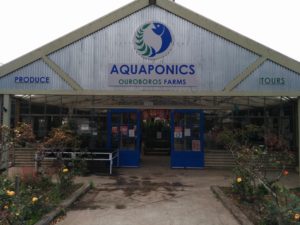 Ouroboros Farms Sustainability Initiatives
Ouroboros Farms Sustainability Initiatives
Ken and his team show a strong commitment to sustainability by thinking through every part of the aquaponics process and its supply chain. For example, they purchased untreated Redwood lumber to build the planters, from a local company who plants 10 trees for every one they cut down. Ouroboros Farms were also unhappy with the plastic waste from the seedling trays, so found a tray supplier who took back their used trays and re-used them.
The one remaining issue is the seedling plugs used to raise the plants from seed. They contain an inert (but fossil-fuel based) polymer that prevents organic certification and are currently a waste stream they have not find a use for.
Even though they are not classified organic, the Ouroboros Farms greens are renowned for their delicious taste, 100% quality with no spoilage and long-life.
 Thank You!
Thank You!
Many thanks to Adrienne Etherton of Sustainable San Mateo County for organizing the tour (and welcoming Santa Clara residents!), Ken Armstrong of Ouroboros Farms, and Tamara Diamond of Green Festival SF for the invite.
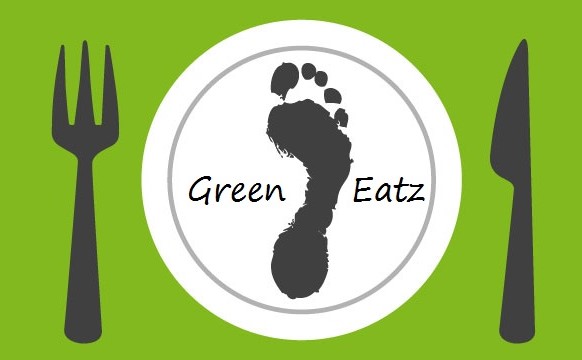
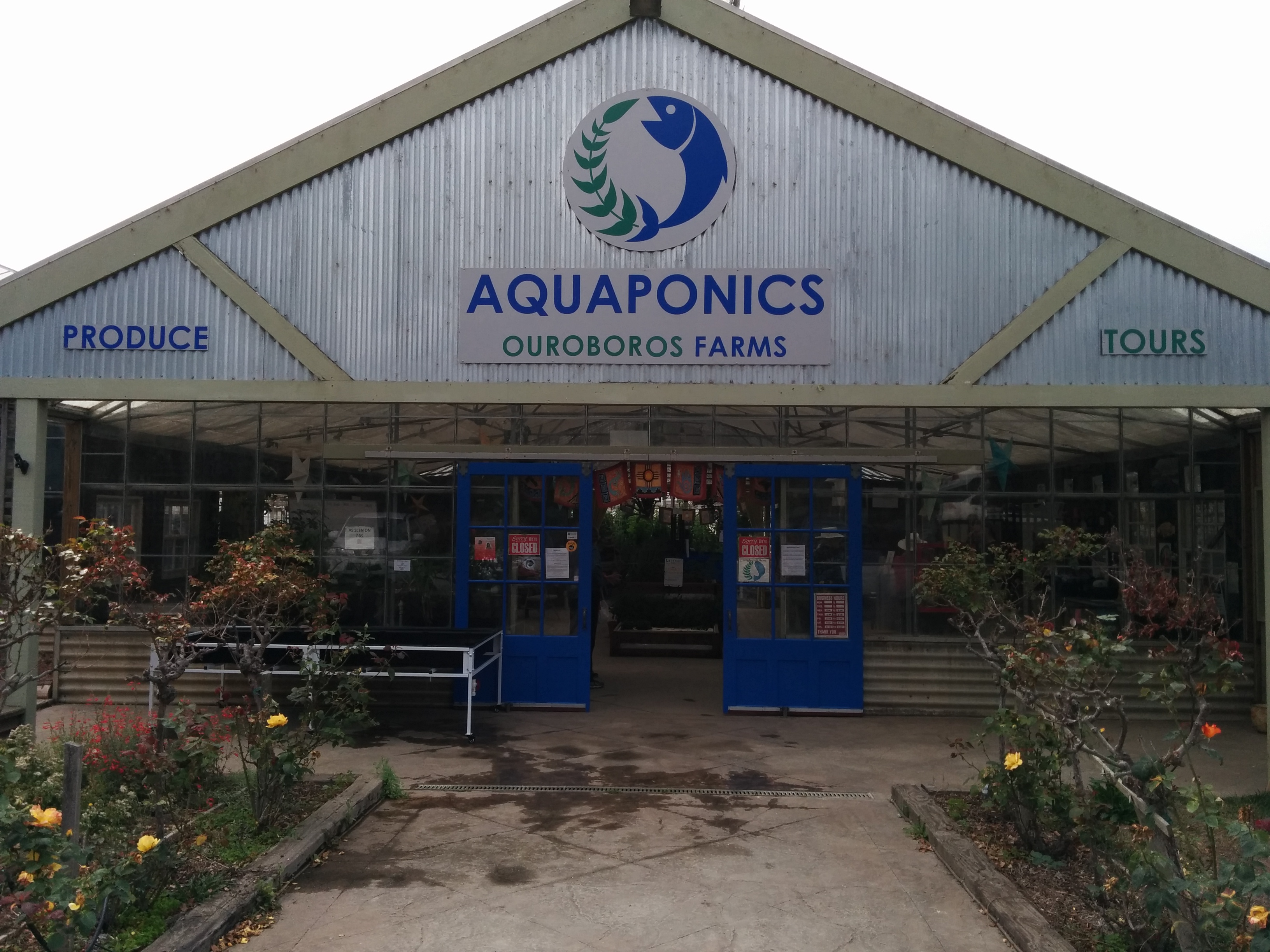


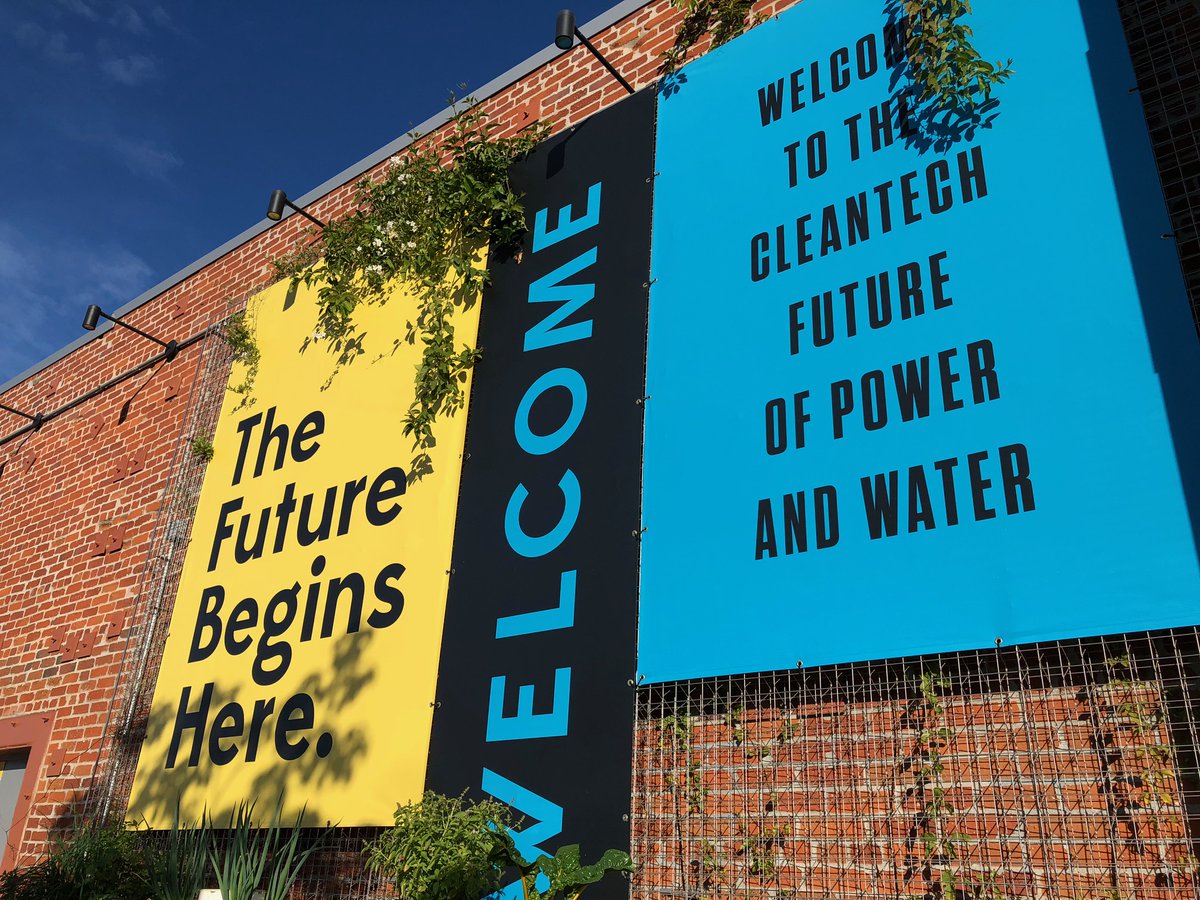
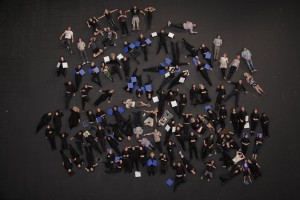

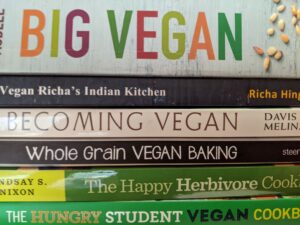
I got a chance to work with aquaculture and it’s amazing to see healthy plants growing through it. Recently I watched a video about Japanese people lives more healthy life as they are more dependent on seafood. Waste of fish act as natural ingredients for plants growth.
This is an high level tech.,in aquaculture industry.l look forward to visit your exciting and wonderful farm.l will be relocating to Los Angeles mid July from Baltimore MD,l humbly and wholeheartedly wish to be trained in this modern farming system.This is a great job